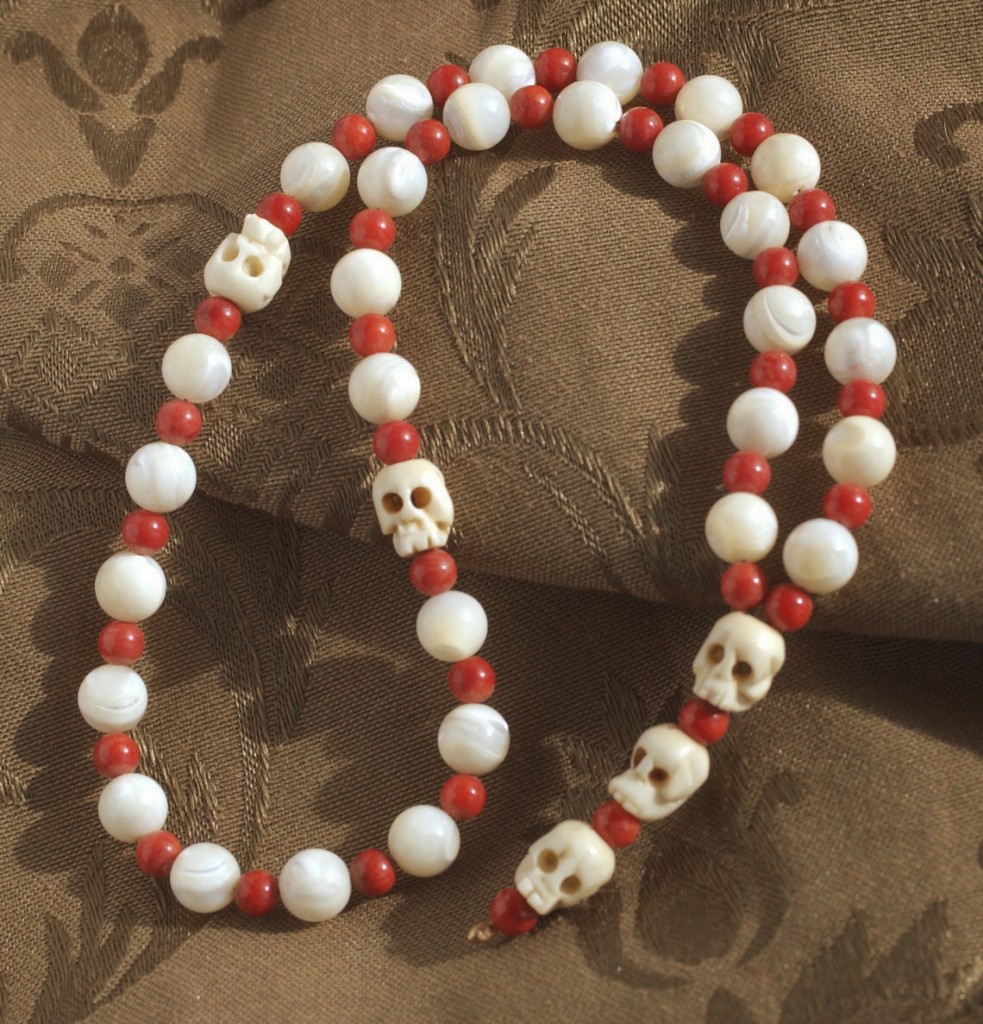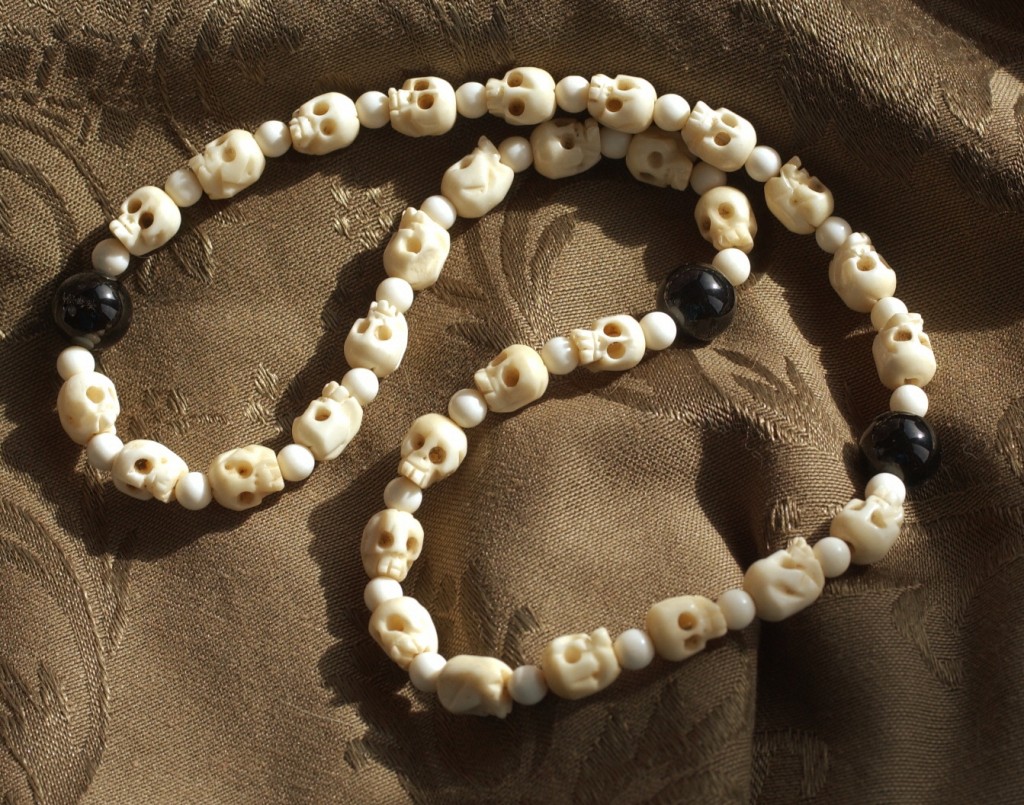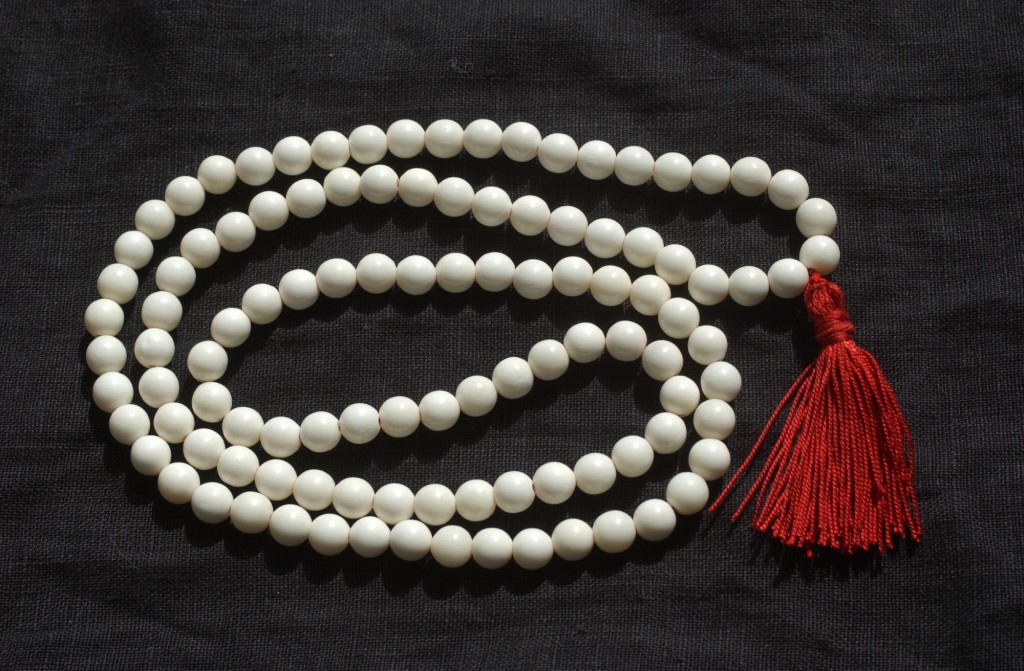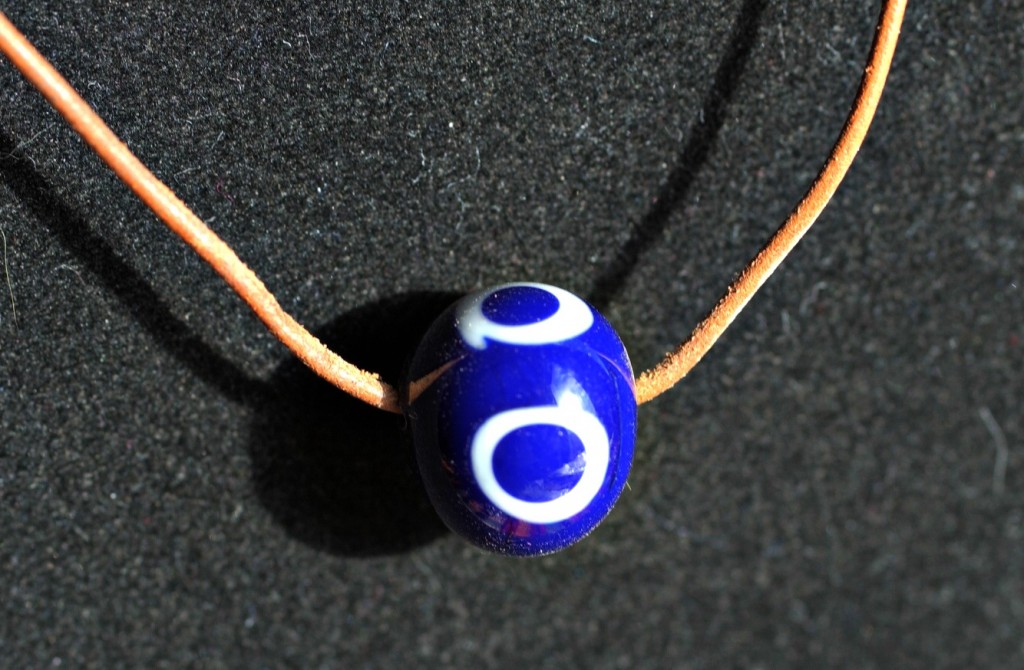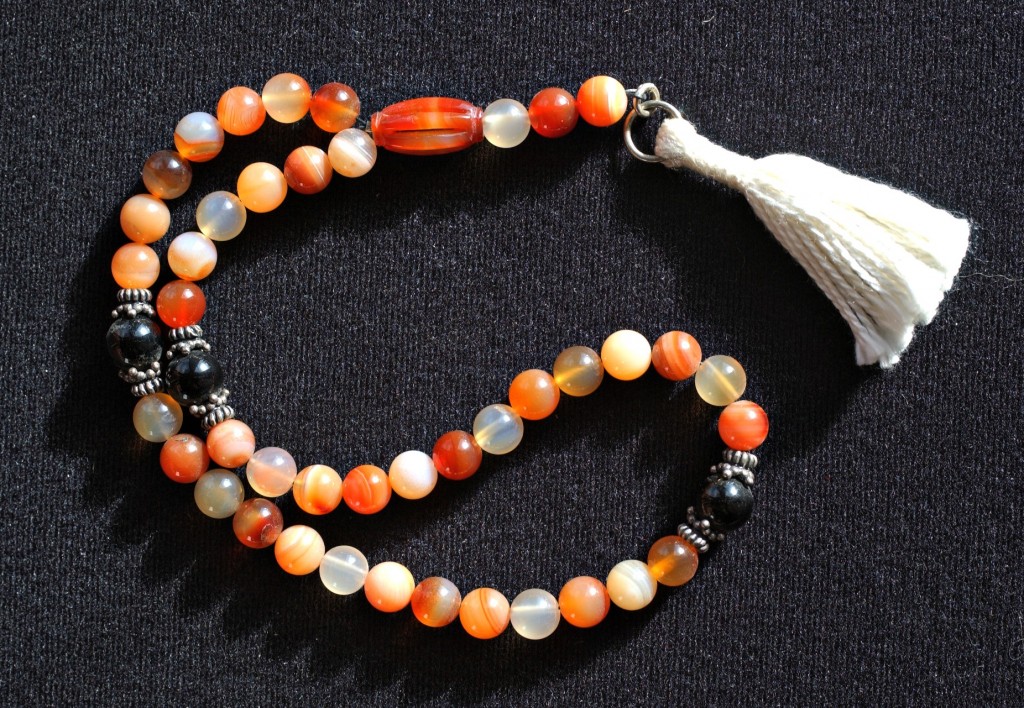Last time we discussed the basic geography of a rosary and what the most common forms were for European Roman Catholics. Now let’s discuss the individual components of the Rosary in greater detail.
Beads, that is what both the Ave and Paternoster beads are. The average person was most likely to have a rosary that was made of wooden, bone or glass beads. Wooden and bone beads were manufactured locally in most places in Europe. The City of London still has a Paternoster Row – a street where Paternosters were once sold and probably manufactured.
Henry VIII’s rosary is a tenner that is made of elaborately carved boxwood beads with a ring at one end and a large gaude/Paternoster at the other. I was fortunate to actually see this rosary in person a number of years ago when it was on tour in Las Vegas at the Bellagio Art Gallery. You can see it online here.
Do glass rosaries surprise you? The import records from England indicate the import of literally thousands of Paternoster strands from Italy during the 1500’s – all made of glass. I have not been able to locate any surviving paternosters that are made of glass. The beads that they were believed to have been made of do appear archaeologically.
What else can the beads be made of? Well, we have already mentioned wood, bone and glass, but all sorts of stones, semi-precious and precious, coral and metal beads were used. There were actually special rules, called sumptuary laws, put into place in some locations to attempt to control the ostentatious display of wealth. The church put specific sumptuary laws in place to prohibit some of their clergy from using rosaries that contained precious stones and coral.
Other materials may also have been used, like clay or rose petals. There is a lot of modern mythology about when mashed rose petals began to be used to make rosary beads. I have not been able to find any reliable scientific information on this technique as a source of medieval rosary beads. I believe that some of the confusion on this topic may be due to the association with the red rose with the cult of Mary. Modern researchers may have taken comments about roses and Mary literally, when they are meant symbolically. This sort of confusion is unfortunately common. For instance, the German word for beads is Perle. Modern English speakers often assume the word means pearl, when it actually just means a bead made of ANY material.
Multi-decade rosaries are often made as loops. The looped rosary is probably the most common form that we find modernly, and it was definitely used prior to 1600. Loops commonly contained 3 or 5 decades. They generally had a decorative tassel or cross. The cross could be a solid cast or carved piece, or it could be made of multiple beads, as demonstrated in this picture. Several rosaries that were found aboard the wreck of Henry VIII’s ship the Mary Rose (July 19, 1545) had constructed crosses like this. Many of the crews skeletons were found with their rosary on their person or in close proximity, indicating that most of the sailors carried rosaries at all times.
 English: A rosary found on board the carrack Mary Rose. (Photo credit: Wikipedia)
English: A rosary found on board the carrack Mary Rose. (Photo credit: Wikipedia)
Rosary ends could be decorated with crosses, tassels, a large beads called a gaude, or a ring. Remember Henry VIII’s rosary – he had a gaude and a ring.
I hope that this brief summary of rosary components helps you better understand what a pre-1600’s rosary should look like.

